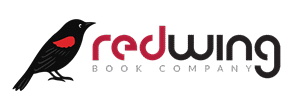📌 In This Issue:
- We’ve Removed All Tracking (And Why That Matters)
- Book Spotlights: Healing Yourself with Traditional Chinese Medicine & Channeling Fragrance
- Summer Formula of the Month: Qing Ying Tang
- Research Update: Essential Oils and Shen Disorders
- Upcoming Events & CE Highlights
- Practitioner Tip: How to Use TCM Dietary Therapy in Heatwave Season
🔒 We’ve Removed All Tracking (And Why That Matters)
At Redwing Books, we’ve made a deliberate and unusual choice for an online business: we’ve removed all third-party marketing trackers, behavioral profiling tools, and advertising cookies from our website.
That means we don’t follow you across the internet, we don’t sell or share your data, and you won’t see ads from us chasing you around after you browse. You won’t even see a cookie banner—because we don’t need one.
We believe your healing journey should be accompanied by knowledge, not surveillance. Our mission is rooted in the ethics of Traditional Chinese Medicine: respect for nature, personal agency, and trust in the human process.
Most online retailers prioritize data collection to drive sales. We’ve chosen a different path—one that honors your privacy, even at the expense of marketing metrics. Because at Redwing, integrity isn’t just a word—it’s how we do business.
📚 Book Spotlight 1
Healing Yourself with Traditional Chinese Medicine
By Lily Choi, DACM & Bess Koutroumanis, LAc
A practical and empowering guide for those seeking natural solutions to chronic health concerns. Dr. Lily Choi demystifies acupressure, herbalism, meditation, and lifestyle principles to help readers take control of their healing journey. Includes accessible treatments for headaches, anxiety, insomnia, fertility, and more.
🛒 Available now at RedwingBooks.com
📚 Book Spotlight 2
Channeling Fragrance: A Clinical Manual for Using Essential Oils in Chinese Medicine
By Peter Holmes
An authoritative and integrative guide to using essential oils within the framework of Chinese medical theory. Holmes outlines channel-based oil selection and application for both physical and emotional conditions—bridging aromatherapy with acupuncture, herbal energetics, and the Five Elements.
🛒 Available now at RedwingBooks.com
🌿 Formula of the Month: Qing Ying Tang
This classical formula clears heat from the nutritive (Ying) level and is used for high fevers, restlessness, faint rashes, and potential bleeding. It includes herbs like Sheng Di Huang, Xuan Shen, and Dan Shen, which help cool the blood and nourish yin during febrile conditions.
For details on the individual herbs used in this formula, see Concise Chinese Materia Medica (Paradigm Publications).
🧠 Research Brief: Essential Oils and Shen Disorders
A 2025 study published in Pharmaceuticals found that agarwood essential oil inhalation significantly reduced depressive-like behaviors and inflammation markers (IL‑1β, IL‑6, TNF‑α) in a mouse model, while activating the BDNF/TrkB/CREB neuroprotective pathway.
While pre-clinical, this supports traditional Chinese medicine use of agarwood to calm the shen and stabilize emotional states—especially when paired with acupoint or Five Element protocols.
🔗 Read the full study in Pharmaceuticals
📅 Events & Continuing Education
-
- Aroma Acupoint Therapy Level I (Peter Holmes) – Begins August 2 (Online). Register by July 20 for early pricing. Includes lecture and practicum August 23 & 24.
- Pacific Symposium 2025 – Oct 28 – Nov 4, 2025, San Diego
A premier Chinese medicine & acupuncture conference offering lectures, workshops, Qigong, and CEUs at the Catamaran Resort (in-person) and online. - eLotus CEU: “Treating Summer Heat & Damp Patterns” – On-demand course exploring seasonal syndromes in Chinese medicine.
🍉 Practitioner Tip: Diet Therapy for Summer Heat
Encourage patients to use foods that cool and moisten without weakening the Spleen:
- Mung bean soup
- Watermelon juice (moderation!)
- Chrysanthemum tea
- Avoid excessive iced drinks, which impair digestion.
Thanks for reading. To suggest content or share your clinical insights, contact us at info@redwingbooks.com
